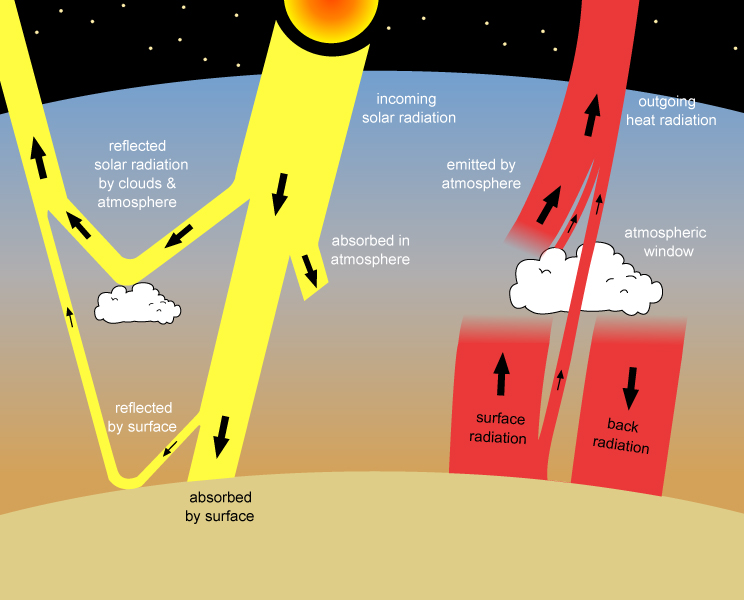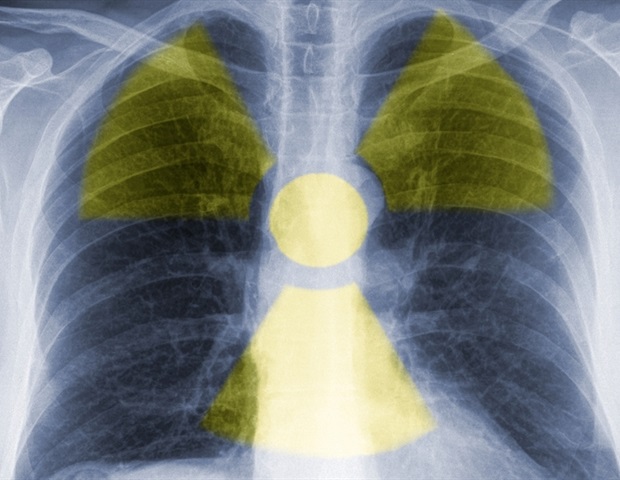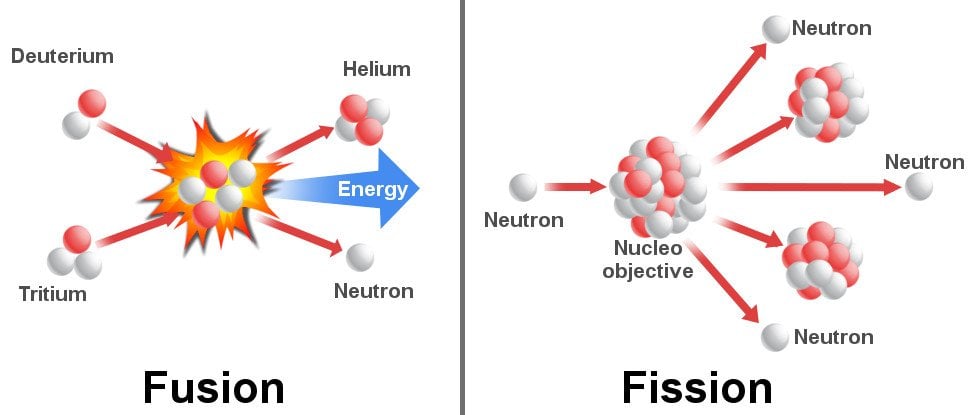Physics Paper 1
- Created by: User109876543210
- Created on: 28-11-18 19:08
Topic 1 - Energy Stores
Energy Stores
- energy is transferred between stores. There are 8 (main) energy stores:
- Thermal energy
- Kinetic energy
- Grav. Pot. energy
- Elastic Pot. energy
- Chemical energy
- Magnetic energy
- Electrostatic energy
- Nuclear energy
- energy can be transferred ...
- mechanically
- electrically
- by heating
- by radiation
- when a system (a single/group of objects) changes, energy is transferred
Topic 1 - Work Done
Work Done = energy transferred
- for a falling object with no air resistance: energy lost from g.p.e. store = energy gained in the kinetic energy store
- in real life, objects are affected by air resistance, so some energy is lost to thermal/ sound energy stores
Topic 1 - Kinetic, Elastic & Potential Energy Stor
Kinetic, Elastic & Potential Energy Stores
- Elastic potential energy
- as long as the limit of proportionality is not exceeded, the formula is applicable
- Gravitational potential energy
- the higher the object is, the more energy is moved to this store
- the higher the object is, the more energy is moved to this store
- Kinetic energy
- energy is transferred into when an object speeds up, away from when it slows down
 * first two are for GPE, other Kinetic
* first two are for GPE, other Kinetic
Topic 1 - SHC
Specific Heat Capacity
- amount of energy needed to raise the temp of 1kg of a substance by 1*C
- change in thermal energy = mass × specific heat capacity × temperature change
Investigating SHC (write the method below)
* formula for power: P=V I, formula for SHC from a graph: 1/(gradient x mass of block)
Topic 1 - Conservation of Energy + Power
Conservation of Energy + Power
- Energy can be transferred, stored or dissipated but it can never be created or destroyed
- Power is the rate of doing work (transferring energy)

-
- P= E/t P= W/t
- more powerful = some amount of energy transferred over less time
- Power is measured in Watts (W), 1 W = 1J of energy transferred
Topic 1 - Cunduction + Convection
Conduction
- vibrating particles transfer energy onto neighbouring particles
- mainly occurs in solids
- energy is transferred to an object by heating, to its thermal energy store, particles vibrate and collide, energy is transferred to the kinetic energy stores; this continues until the energy is transferred across the whole object, then usually to its surroundings
- thermal conductivity is a measure of how quickly energy is transferred through a material
Convection

only occurs in liquids and gases, its where energetic particles move away from hotter to colder regions
Topic 1 - Reducing unwanted energy transfers
Reducing unwanted energy transfers
- Lubrication
- reduces frictional forces ~ friction causes dissipation in systems
- usually liquids e.g. oils
- Insulation
- reduces energy loss through heating
- some examples of insulation in houses
- thick walls from a material of low conductivity
- thermal insulation:
- cavity walls
- loft insulation
- double glazed windows
- draught excluders
Topic 1 - Investigating Energy Transfers
Investigating Energy Transfers
write the method
Topic 1 - (HT) Infrared Radiation
Infrared Radiation
- infrared radiation is emmited from the sun and is part of the electromagnetic spectrum, infrared wavelenghts are longer than the wavelenghts of visible light
- the sun emmits all types of electromagnetic radiation, but the earth's atmosphere blocks most of the types of radiation that are harmfull to people - except infrared radiation and light
- the higher the temperature of an oject, the more infrared radiation it emits at a given time
- all bodies emit and absorb radiation - a body at constant temp. absorbs and emits radiation at the same rate
- a perfect black body is one that absorbs all radiation that hits it. it doesn't reflect or transmit radiation, a good absorber is also a good emiter - so a black body is also the best possible emmiter, the radiation emit by a black body is called black body radiation
- an object at a constant temperature emits radiation across a continous range of wavelenghts
- the intensity of the radiation is highest at a certain wavelenght, which depends on temperature
- if temperature of an object is increased, the intensity of the radiation it emits is greater at every wavelenght, this is because the shorter the wavelenght of the radiation, the greater the increase of intensity at that wavelenght, so the peak intensity is at a shorter wavelght than when it was at a lower temp
Topic 1 - (HT) Infrared Radiation (2)
Absorbption + Emission of Infrared Radiation
- rescue teams use a light coloured, shiny blanket to keep accident survivors warm - as it emmits a lot less radiation than dark, matte surfaces
Radiation and the Earth's Temperature
- if the earth had no atmosphere it would be around -180*C at night
- in the atmosphere, some gases (e.g. greenhouse gases) prevent excess radiation fom excaping - warming the atmosphere

Topic 1 - Energy Resources + Their Uses
Energy Resources + Their Uses
- Non-renewable :
- fossil fuels (coal, oil,(natural)gas) and nuclear fuels
- they will run out
- damage the environment
- provide most of our energy
- Renewable :
- solar, wind, water waves, hydro-electricity, bio-fuel, tides, geothermal
- will never run out
- they do damage the environment - but not as much as non-renewable energy sources
- don't provide as much energy as often unreliable
Topic 1 - Energy Resources + Their Uses (2)
Energy Resources + Their Uses
- energy resources can be used for heating
- non-renewable:
- natural gas - heating homes
- coal - fireplace
- electric heaters use electricity generated from non-renewable sources
- renewable:
- geothermal heat - heat buildings
- solar water heaters - heat buildings
- burning bio-fuels - heating
- non-renewable:
- energy resources can be used for transport
- non-renewable:
- oil - petrol + diesel are used by most vehicles
- burning coal - steam trains
- renewable:
- bio-fuel/mix of bio-fuel + oil - vehicles
- non-renewable:
Topic 1 - Wind + Solar Power
- Wind power
- no pollution (except from when built)
- initial cost is high, but then maintenance cost is low
- no permanent damage to the view
- they spoil the view - 1500 turbines replace 1 coal-fired power station
- wind stops = turbines stop: unreliable
- impossible to increase supply if there is demand
- Solar Cells
- good for batteries in calculators and watches
- mostly used in remote places or to power road signs
- reliable in hot, sunny climates
- initials costs are high but then low
- used in small-scale
- unreliable during the night and in cold climates
- can't increase power output if there's demand
Topic 1 - Energy Use
Non-renewable resources
- cause long-term effects in the ecosystem: add to the greenhouse gas effect and global warming and can cause acid rain
- oil spills cause serious environmental issues
- nuclear power is 'clean', but nuclear waste is very dangerous and difficult to dispose of
Trends in Energy Use
- governments want more clean energy to be used because:
- people want to reduce the effect on the environment
- these will run out
- pressure from other countries and public
- electrical cars and hybrids are increasingly popular
- however,
- some people don't believe in their effects
- some don't care
- some can't afford clean energy
Topic 2 - Current + Circuit Symbols
Current + Circuit Symbols
- a current is a flow of electrical charge (amperes, A)
- resistance is anything in the circuit which slows down the flow (ohms)
- the greater the resistance across the current, the smaller the current that flows through it (for a given voltage)
- charge = current × time

Topic 2 - Resistance
Resistance
V = I × R - voltage = current × resistance
 - resistance is directly proportional to length, so the longer the wire, the higher the resistance.
- resistance is directly proportional to length, so the longer the wire, the higher the resistance.
- for this experiment, plot a graph of resistance (y) and length of wire (x) to investigate the factors affecting resistance
Topic 2 - Power equations
Power equations
Topic 2 - Electric Fields
Electric Fields
- the closer the object to the field, the stronger the field
- when a charged object is placed in the field, it's either repulsion or attraction
- a high voltage causes a strong electric field between the charged object and earth
- sparks caused
- a strong field ionised the surrounding air
- when air is ionised, it's conductive - a current can flow = spark
Topic 4 - (HT) Nuclear Radiation in Medicine
Nuclear Radiation in Medicine
- some examples:
- Radioactive tracers - used to trace the flow of a substance thorugh an organ
- Gamma cameras - takes images of internal organs
- Gamma radiation in a narrow beam - destroys cancerous tumours
- Radioactive implants - destroys cancer cells in some tumours

Topic 4 - (HT) Nuclear Fission and Fusion
Fission - type of nuclear reaction use to realease enrgy from alrge unstable atoms by splitting them, spontaneus fission rarely happens (nucleus needs to have absorbed a neutron before splitting), when the new (smaller) atoms are formed, 2 or 3 neutrons are also released - cause more fission to occur (chain reaction), energy not transfered to kinetic energy stores is carried away in gamma rays, rate of reaction is controlled by rods which absorb neutrons, uncontrolled chain reactions lead to explotions - how nuclear weapons work

Fusion - two light nuclei collide (at high speed) and fuse to create a larger nucleus, some energy is released as radiation, it releases a lot of energy, it would be very expensive to use fusion safely
Related discussions on The Student Room
- 10 weeks going from C to A* - Alevel »
- Edexcel A Level Physics Advanced Physics II 9PH0 02 - 9th June 2023 [Exam Chat] »
- GCSE Exam Discussions 2024 »
- content »
- GCSE Exam Discussions 2023 »
- Inquiry about Private Candidates for Cambridge Examinations »
- A-level Exam Discussions 2024 »
- Inquiry about Private Candidates for Cambridge Examinations »
- Revision Struggles?! Join the 2023 TSR All Day Revision Thread! »
- Investing in my future 🤎 »
Comments
No comments have yet been made